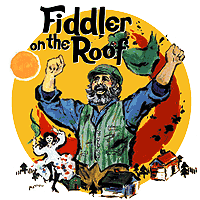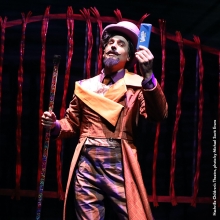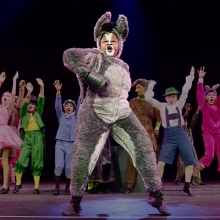The New York Times Examines the Enduring Legacy of FIDDLER ON THE ROOF
The New York Times Examines the Enduring Legacy of FIDDLER ON THE ROOF
 "Beyond its continuing vibrant life in the theater, 'Fiddler,' like no other musical before or since, has seeped into the culture more widely, functioning in sometimes contradictory ways, which makes sense, since the show’s essential gesture is dialectical: it looks backward and forward, favors both community and individual needs, honors the particular and the universal, struggles between stasis and change, bewails and celebrates."
"Beyond its continuing vibrant life in the theater, 'Fiddler,' like no other musical before or since, has seeped into the culture more widely, functioning in sometimes contradictory ways, which makes sense, since the show’s essential gesture is dialectical: it looks backward and forward, favors both community and individual needs, honors the particular and the universal, struggles between stasis and change, bewails and celebrates."
-Alisa Solomon, The New York Times
Winner of nine Tony Awards, the beloved classic FIDDLER ON THE ROOF began life when Jerry Bock, Sheldon Harnick and Joseph Stein decided to adapt Sholom Aleichem's Tevye the Dairyman to the musical stage. FIDDLER ON THE ROOF originally opened on September 22, 1964 at the Imperial Theatre and ran for seven years and nine months - setting a record of 3,242 performances. A 1991 revival earned the show another Tony for Best Revival of a Musical, further cementing the piece as a timeless classic resonating with all generations.
In a recent article in the New York Times, journalist Alisa Solomon asks, "How does a work of popular culture glow with a radiant afterlife, illuminating for different audiences the pressing issues of their times?" "The answer lies in large part," writes Solomon, "in where 'Fiddler' came from and how it was made."
This fascinating piece examines how frequent creative clashes between lead actor Zero Mostel and director Jerome Robbins lead the show to become not only a cultural touchstone, but a vibrant and evolving work of art.
Read The New York Times article: On Jewishness, as the Fiddle Played ‘Fiddler on the Roof,’ Its Production Heritage

























